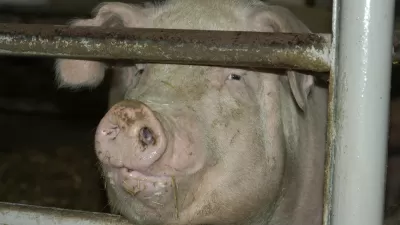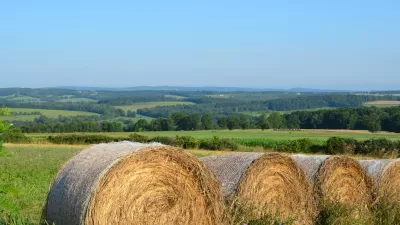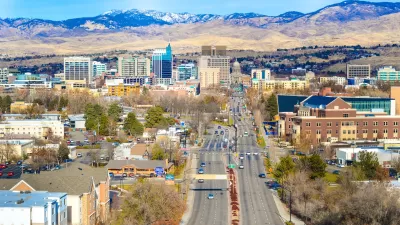As the city of Boise and surrounding communities in Ada County, Idaho continue to grow and sprawl outward, agricultural land in the county may become a thing of the past.

With it's population expected to double by 2040, Ada County, Idaho is looking at a future without agricultural land. As Harrison Berry of the Boise Weekly reports, less than 8 percent of the county is now used for farming (down from 17 percent in 1939). And while farmland has actually increased statewide, the pressures of urban growth in Ada County has created a continued decline in farmland that worries some local activists and planners.
As Ada County develops its comprehensive plan for development through 2025, a handful of farmers and advocates are pressing for protections to preserve farmers' livelihoods, access to locally grown foods and open spaces.
"Right now, Boise's considered one of the best cities with a great quality of life. No doubt, because it has all these open spaces, but it's not going to stay that way if our whole valley looks like the stretch between Boise and Nampa," said Josie Erskine, who serves as district manager of the Ada County Soil and Water Conservation District and co-owner of Peaceful Belly Farm.
Erskine believes the presence of agricultural land is a quality of life issue, not just an economic one. To preserve the land for continued farm use, Erskine and others are looking at a host of alternatives, including agricultural easements to donate or purchase the land through a non-profit in order to protect it from future development. Berry reports that another idea is to create a preservation board similar to the county's open space taskforce to preserve threatened ag land.
FULL STORY: How Agriculture in Ada County is Being Edged Off the Map

Maui's Vacation Rental Debate Turns Ugly
Verbal attacks, misinformation campaigns and fistfights plague a high-stakes debate to convert thousands of vacation rentals into long-term housing.

Planetizen Federal Action Tracker
A weekly monitor of how Trump’s orders and actions are impacting planners and planning in America.

San Francisco Suspends Traffic Calming Amidst Record Deaths
Citing “a challenging fiscal landscape,” the city will cease the program on the heels of 42 traffic deaths, including 24 pedestrians.

Defunct Pittsburgh Power Plant to Become Residential Tower
A decommissioned steam heat plant will be redeveloped into almost 100 affordable housing units.

Trump Prompts Restructuring of Transportation Research Board in “Unprecedented Overreach”
The TRB has eliminated more than half of its committees including those focused on climate, equity, and cities.

Amtrak Rolls Out New Orleans to Alabama “Mardi Gras” Train
The new service will operate morning and evening departures between Mobile and New Orleans.
Urban Design for Planners 1: Software Tools
This six-course series explores essential urban design concepts using open source software and equips planners with the tools they need to participate fully in the urban design process.
Planning for Universal Design
Learn the tools for implementing Universal Design in planning regulations.
Heyer Gruel & Associates PA
JM Goldson LLC
Custer County Colorado
City of Camden Redevelopment Agency
City of Astoria
Transportation Research & Education Center (TREC) at Portland State University
Jefferson Parish Government
Camden Redevelopment Agency
City of Claremont





























